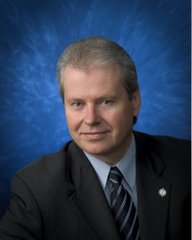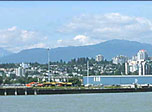Prime Minister Carney (the Banker) has been revealed as a
spendthrift of public money. The Budget tabled in the House of Commons on Tuesday,
Nov. 4, 2025, confirmed the lack of financial responsibility. Every economic
metric has steadily worsened since 2015, hurting average Canadians and
revealing the Liberal moral failure.
However, the Liberal social rot is much deeper. Their dark
side is revealed in Bill C-9, introduced in 2025. On the surface, the Bill sounds
reasonable. It claims to be: -An Act to amend the Criminal Code (hate
propaganda, hate crime and access to religious or cultural places). Bill C-9
would amend the Criminal Code to propose new offences to better protect access
to religious, cultural and other specified places, and to address
hate-motivated crimes. The proposed amendments would create four new criminal
offences: (1) an intimidation offence that prohibits conduct that is intended
to provoke a state of fear in another person to impede them from accessing
religious or cultural institutions and other specified places; (2) an offence
that prohibits the intentional obstruction of a person's lawful access to such
places; (3) a hate crime offence to more explicitly denounce hate-motivated
crime; and (4) an offence that prohibits wilfully promoting hatred against any
identifiable group by displaying, in any public place, particular hate or
terrorist symbols.
The Liberals insist Bill C-9 is needed to protect religious
Canadians from hate. Implementation would likely do the opposite, as it will
expose people of faith to criminal prosecution for the simple act of quoting
the Bible. We must not forget that every heinous government regime in history
existed by controlling thoughts and beliefs not acceptable to the State. We
must not forget Rome, the Nazis, the Marxism of the Soviet Union, and the
custodial countries of today. They have unique ways of justifying coercive
control over social discourse.
The Liberals and the Bloc Québécois made a backroom deal to
eliminate the long-standing Criminal Code safeguards for freedom of expression
and religious freedom in exchange for the Bloc's support for Bill C-9. Traditionally,
Canada’s hate speech laws say people cannot be prosecuted for expressing, “in
good faith,” an argument or opinion on a religious subject or “based on belief
in a religious text.” The Supreme Court has recognized this defence as
necessary to keep Canada's hate-speech laws constitutional, recognizing the
crucial importance of freedom of expression and freedom of religion.
From C-9, people of faith could be imprisoned for up to two
years for expressing sincerely held religious convictions that the government
finds offensive. Knowing that people of faith could face imprisonment for
expressing sincere religious beliefs, should inspire Canadians to feel
protective and vigilant about safeguarding religious expression.
Religious communities, including Jews, Christians, Muslims,
Sikhs, Hindus, and Buddhists, hold a vast range of beliefs. They often disagree
on questions of morality, sexuality, politics, and culture. Some may find
beliefs objectionable. But a free society based on sensible law does not
criminalize the expression of sincerely held religious doctrine. We are to converse
and debate people we disagree with. We do not coercively silence them, nor do
we arrest and prosecute them. That is the behaviour of China, Russia, and North
Korea.
The Liberals at the Justice Committee said there was “clear
hatred” in some books of the Bible and Torah, singling out Leviticus,
Deuteronomy, and Romans. Liberals said: "Clearly, there are situations in
these texts where these statements are hateful.” “They should not be used to invoke or be a
defence.” It was said that local prosecutors
should be able to “press charges.”
C-9 removes the existing safety value of a higher review,
requiring the Provincial Attorney General to give specific and individual
consent for any prosecution under these sections. The Liberals are now prepared
to codify their dark agenda with the help of the Bloc Québécois by removing
the traditional protection.
The Bloc has long pushed for the ability to prosecute people
for religious expression. The Bloc often cites the case of Montreal Imam Adil
Charkaoui, who, in 2023, used a prayer to call for the extermination of Jews.
Prosecutors declined to charge him, and some suggested (incorrectly) that the
religious text defence tied prosecutors’ hands. What Charkaoui said was
illegal. The religious text defence only applies to wilful promotion of hatred
and antisemitism under section 319(2) and 319(2.1) of the Criminal Code. There
is no such defence for advocating genocide under section 318 or public
incitement under section 319(1).
The refusal to charge Charkaoui was another example of authorities failing to enforce existing law when the Jewish community and others were targeted.
Concerning C-9, witnesses told the Justice Committee that
the religious text defence is narrow and does not offer blanket immunity, as
the Liberals falsely claim. The Liberals lie, as they have an agenda. The courts have been clear that violence and calls to violence are not protected
as free expression. They certainly aren’t “in good faith,” as a proper defence would
require.
Removing the religious freedom safeguard from the Criminal
Code will not make Canadians safer. It will certainly not protect anyone, least
among them, people of faith, from hate. Religious groups have spoken out about
the change, saying it could chill the promotion and teaching of religious texts
by the clergy.
The Conference is Bishops says: “This narrowly framed
exemption has served for many years as an essential safeguard to ensure that
Canadians are not criminally prosecuted for their sincere, truth-seeking
expression of beliefs made without animus and grounded in long-standing
religious traditions. Courts have made clear that only the most extreme forms
of speech fall within the scope of hate-propaganda offences. However, the
removal of this provision risks creating uncertainty for faith communities,
clergy, educators, and others who may fear that the expression of traditional
moral or doctrinal teachings could be misinterpreted as hate speech and subject
the speaker to proceedings that could result in imprisonment of up to 2 years.
As legal experts have noted, the public's understanding of hate speech and its
legal implications is often far broader than what the Criminal Code actually
captures. Eliminating a clear statutory safeguard will likely therefore have a
chilling effect on religious expression.”
The House of Commons reconvenes on Monday January 26, 2026. If these amendments are adopted, Bill C-9 will chill political and religious discourse, inviting the State to police peoples most deeply held religious convictions. This assault on freedom of expression and religious freedom should not stand. The Liberal haughty aggressiveness for their measures in C-9, gives a glimpse into the dark side of the Liberal political psyche.



















